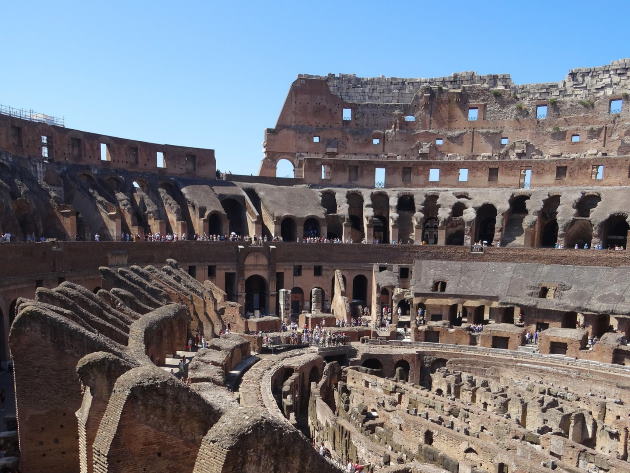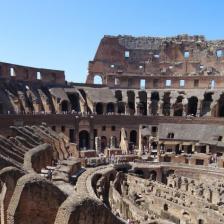
What people throws away tells a lot about about the lives they lead, and archaeologists know this well. At the Colosseum, one of Rome’s iconic monuments, recent research into the workings of the hydraulic system and sewers (presented during a day of public archaeology) helped gathering useful information to face the challenge of water management and increasingly frequent flooding, but it also returned a fascinating snapshot of what revolved around the largest performance machine of antiquity, including the customs and habits of those who frequented the famous amphitheater.
Stratigraphic excavations of the south collector, obstructed and out of use more or less since 523 AD, when the Colosseum was permanently abandoned and then reoccupied in different ways and for different purposes, have unearthed a wealth of artifacts that testify to the last phases of the amphitheater’s life before the “end of the games”. For example, what did the spectators eat during the long days devoted to shows? We have a clue thanks to the remains of seeds and fruits found – figs, grapes, melons, olives, peaches, cherries, plums, walnuts, hazelnuts, and pine nuts, consumed along with meats freshly cooked on improvised braziers, pizzas, and vegetables.
Finds recovered also include boxwood and laurel leaves, probably used to decorate the rich scenery or adorn the surrounding areas, and animal bones: bears, lions, leopards but also dogs, even dachshunds, forced to fight each other on the arena or employed in the staged hunts that entertained the Roman people for centuries. However, the ancient pipelines also yielded gambling dice, objects of personal use, such as a worked bone pin, studs, shoe pegs and leather fragments, and several coins from the late period, all in bronze except for a sestertius in oricalc of Marcus Aurelius. Issued in 170-171 AD to celebrate the Emperor’s tenth anniversary, it was perhaps one of the glittering coins thrown at the crowd, dropped into the arena and swept away.
 Condividi
Condividi













































